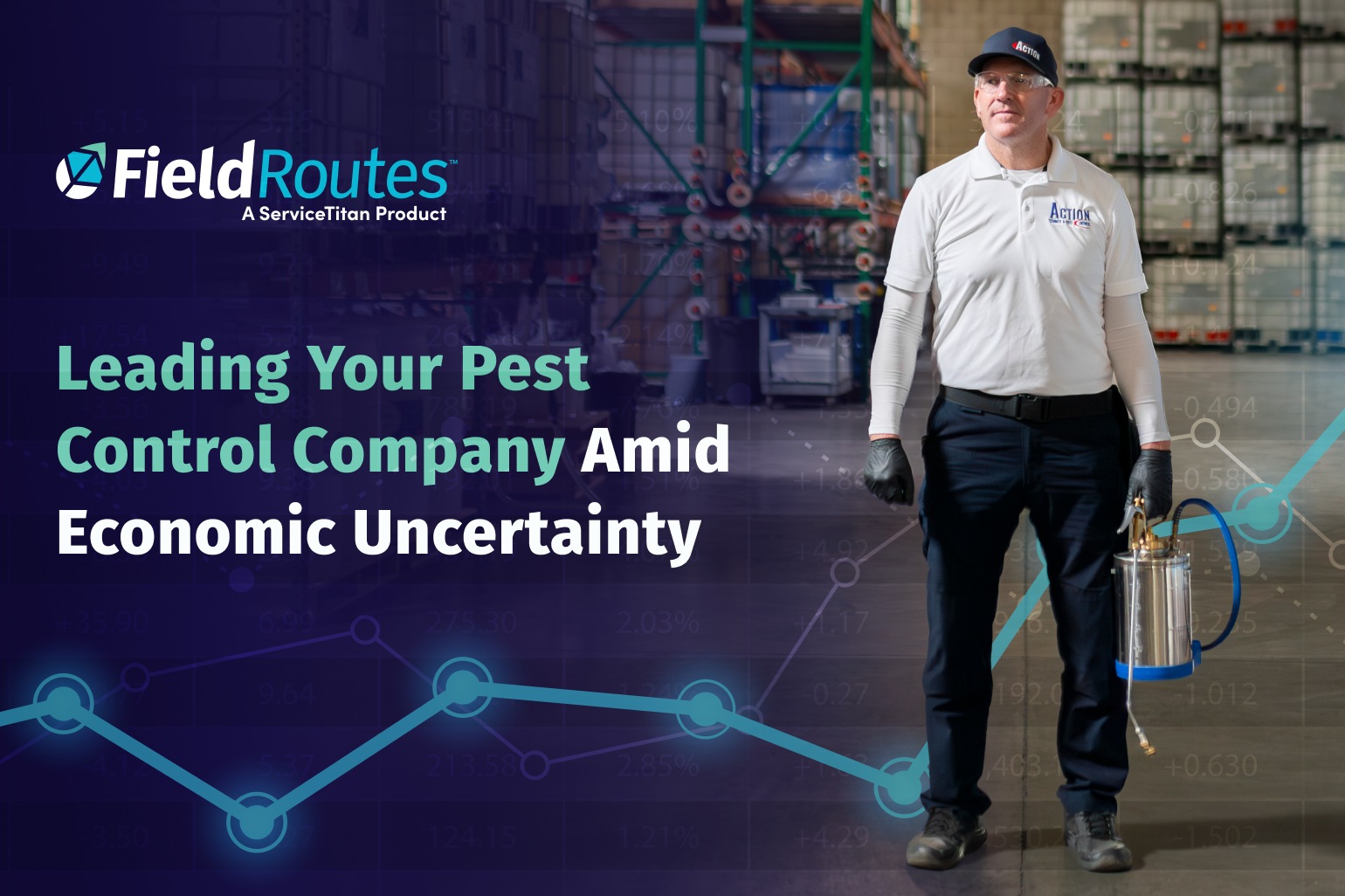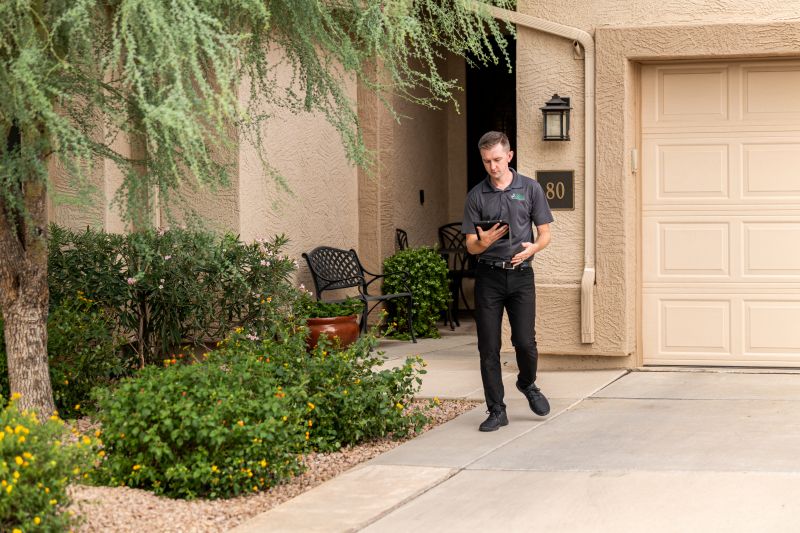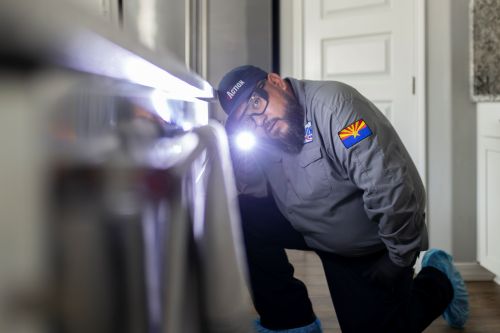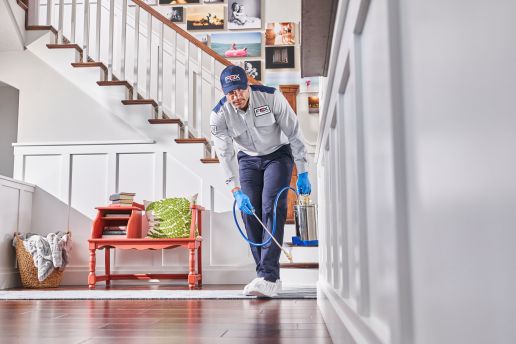How to Raise Pest Control Prices (Without Losing Customers)

Pest control businesses are facing higher costs due to inflation, supply chain costs, and labor costs. So prices need to go up.
However, the fear of losing customers keeps business owners from making those necessary changes.
Raising prices without losing customers seems impossible, but it’s necessary for profitability and long-term success.
Pest control companies can adjust prices to maintain high service standards and absorb the increased operational costs. This guide will show you how to balance the two and keep your customers happy.
Step 1. Understand Why You Need to Raise Prices
Before you raise your pest control prices, you need to understand the reasons behind how much pest control costs you.
Several things affect the pest control industry:
Inflation: Rising costs for supplies, chemicals, and equipment.
Fuel Prices: Higher fuel costs for service vehicles.
Supply Chain Issues: Delays and shortages make materials more expensive.
Labor Shortages: Competitive wages to attract and retain skilled workers.
These also impact the average cost of pest control services as they impact how much you will need to price.
You need to add that the cost of pest control is further impacted by location, the type of pest being treated, and the property's size (square footage).
Absorbing these costs without raising prices can lead to:
Eroded Profit Margins: To cover operational costs and invest in business growth.
Jeopardized Business Health: Consistently absorbing costs weakens financial stability and your ability to break even.
By raising prices proactively, you can maintain high service standards, customer satisfaction, and long-term business viability.
Next, let’s look at how to time the price increase.
Step 2. Choose the Right Time to Raise Prices
To better implement changes, look at seasonal trends and customer behavior.
Optimal times to consider:
Before Peak Season: Raise prices before high-demand periods like spring or summer when termites, roaches, and bed bugs are most active. Customers are more likely to accept higher pest control prices when pest problems increase.
During Contract Renewals: Introduce price changes at contract renewal time so you can communicate changes clearly and set expectations upfront.
Knowing the pest control ranges for different services will help you plan the timing of price increases.
To avoid customer shock, you should consider:
Implement Gradual Increases: Small incremental changes are easier for customers to accept.
Maintain Predictability: Regular price reviews so customers know what to expect.
Timing price increases maximize profitability yet does not erode customer trust. Now, let’s discuss how to communicate the price changes.
Step 3. Communicate Price Changes Clearly
Communicate with customers transparently to build trust and loyalty.
Here’s how to communicate price increase announcements:
Use Clear Scripts and Templates: Prepare email, letter, and in-person conversation templates. Include reasons for the increase, e.g., inflation or fuel costs, and how it ensures high service standards. Highlight how efficiently your company removes pest infestations, showcasing your expertise, effective treatments, and guarantees that come with it.
Personalize Your Communication: Address customers by name, acknowledge their history with your pest control business, and thank them for their loyalty. Personalized messages can cushion the blow of a price increase.
Tips for addressing customer concerns:
Listen Actively: Show empathy and acknowledge their concerns.
Highlight Value: Emphasise the service and peace of mind your pest control treatments provide, especially the benefits of a professional pest control service.
Offer Flexible Options: Discuss different service levels or payment plans if applicable.
Clear communication reassures customers and shows you’re committed to providing excellent pest-free services.
Step 4. Bundle and Add Value
Bundling services is a great way to increase the perceived average price of your service offerings and justify higher prices. Customers feel they are getting more for their money when extra services are included in their initial visits.
Consider these innovative service packages and add-ons:
Preventive Treatments: Include regular inspections and preventive measures to keep common pests like roaches, termites, fleas, and bed bugs at bay.
Eco-Friendly Options: Offer chemical-free or low-toxicity treatment plans for environmentally conscious customers instead of chemical treatments.
Seasonal Packages: Bundled services are available at different times of the year, such as spring termite infestation prevention or summer carpenter ants removal.
DIY Pest Control Comparisons: Highlight the limitations of DIY pest control and the added value and effectiveness of professional services, especially for tough pests like cockroaches and bed bugs.
In addition to bundling, implement loyalty programs and referral incentives:
Loyalty Programs: Discounts or free services after several pest control treatments.
Referral Incentives: Rewards for customers who refer new customers, word-of-mouth marketing.
These will justify price increases while still giving you competitive pricing over your competitors.
Step 5. Explore Pricing Strategies
Choosing the right pricing model is critical for profitability in the pest control industry. Different models suit different business needs and are influenced by the type of pest being treated:
Hourly Pricing: Suitable for one-time services with variable time requirements, like complex termite treatments.
Flat Rate: Simple and transparent, easy to quote for common pests like roaches or wasps.
Tiered Pricing: This option offers flexibility. Depending on the pest and severity of the infestation, customers can choose different service levels, basic, standard, or premium pest control treatments or other lawn care types of service.
Value-based pricing is about the benefits and peace of mind your pest control services bring to homeowners. Highlight the effectiveness, safety, and reliability of your treatments to justify higher pest control prices.
Tips for analyzing competitor pricing:
Conduct Regular Market Research: Stay current with what other pest control companies are charging.
Position Your Services Based on Quality: Highlight your service, expertise, and customer satisfaction.
Exploring and implementing pricing strategies will help your business grow. Next, let’s examine how to use FieldRoutes for pricing.
Step 6. Leverage FieldRoutes for Efficient Pricing
FieldRoutes is a pest control management software that simplifies your business, including pricing.
Here’s how FieldRoutes can help:
Automate Pricing Adjustments: Automate pest control prices across your services and ensure consistency.
Customer Communication: Using automated tools to send timely and personalized messages about price changes to reduce customer shock.
CRM Tools: Track interactions and follow-ups and personalize communication.
FieldRoutes also has features to help your pest control business:
Invoicing and Payment Processing: Automate billing, invoicing is faster, and online customer payments are easier.
Customer Retention Tools: Engage with existing customers for upsell, cross-sell, and renewal opportunities using smart automation.
Marketing Campaigns: Target potential customers with promotions based on property size and value.
Using FieldRoutes will help you optimize your pest control pricing and overall business. Now, let’s examine how competitors’ pricing affects your pricing.
How Do Competitors' Prices Affect Your Pricing Strategy in Pest Control?
Knowing your competitors’ pricing strategies is critical to positioning your pest control business and staying competitive.
Market Research: Research local competitors’ pricing to set competitive pest control prices. To get a full picture, research the best pest control companies. Get data through online research, phone calls, or in person. Compare prices for different services, such as initial treatments, follow-ups, and specialty pest control services. This should include customer reviews, service quality, pricing, and guarantees to make informed decisions.
Positioning: Your brand positioning affects how you price your services. Do you want to be considered a premium pest control service or a budget-friendly option? Align your pest control prices with your brand image and the quality of service you provide to justify your rates.
Differentiation: Even with similar pricing, differentiate your services through exceptional customer service, satisfaction guarantees, or eco-friendly treatment options. This differentiation will help you stand out in a crowded pest control market.
Price Matching: Consider price matching a competitive pricing strategy to attract customers, but don’t undercut competitors to an unsustainable level. Profitability and high-quality pest control services should always be the top priorities.
Next, we’ll look at the downsides of raising pest control prices.
What Are the Potential Drawbacks of Raising Pest Control Prices?
Raising pest control prices can be challenging for your business.
Customer Attrition: Some price-sensitive customers may leave if they perceive your services as too expensive. Mitigate this risk by clearly communicating the reasons for the increase and offering value-added services like additional inspections or preventive treatments to justify the higher cost.
Negative Perception: Price increases can sometimes create a negative perception among customers who feel overcharged. Be transparent and explain that the increase is to maintain high-quality pest control services. Frame the change as continuing to deliver effective and reliable pest management.
Competitive Disadvantage: Higher pest control prices can make your services less competitive than other local pest control companies. Combat this by highlighting your unique value proposition, superior customer service, eco-friendly options, or guaranteed results. Emphasize that as a reputable pest control company, you offer guarantees for your services and free estimates, return for additional treatments if pest issues persist, and show you are reliable and customer-focused.
While raising prices has downsides, addressing these proactively helps maintain customer loyalty and satisfaction. Let’s look at the risks of not raising pest control prices.
What Are the Potential Risks of NOT Raising Pest Control Prices?
Not adjusting your pest control prices can have several big risks for your business.
Shrinking Profit Margins: Not raising prices in line with inflation and rising costs will erode profit margins. Over time, this will reduce your financial stability and ability to cover operational expenses.
Inability to Invest: Lower profits will limit your ability to invest in important areas like new equipment, advanced pest control treatments, and employee training, hindering the growth and competitiveness of your pest control business.
Employee Morale: You can’t offer competitive wages and benefits without sufficient revenue. Low wages will lead to low employee morale, higher turnover rates, and an effect on service quality.
Compromised Service Quality: To maintain low prices, you may have to cut corners, use cheaper materials, or use fewer resources, which will compromise service quality and damage your reputation. This is critical in professional pest control, where high-quality services and effective treatments are essential to resolving severe infestations.
Business Failure: Not raising prices will lead to unsustainable business practices and risk long-term business failure.
Raising prices strategically will make your pest control business profitable and sustainable, and you can continue to deliver high-quality service.
It’s Your Turn Now
Raising pest control prices can be tough but necessary for long-term success. Know why you need to raise prices when to raise them, and how to communicate with your customers.
Bundling services and offering loyalty programs can add value.
Strategic pricing means profitability, and you can continue delivering high-quality pest control services.
FieldRoutes pest control software simplifies pricing, invoicing, and customer communication, making it more efficient and customer-happy.
Read more on our blog about growing your pest control business and customer service.
Schedule a free demo with FieldRoutes today to see how our software can support your business growth.
Wanting more? Check out some of our other blog posts!





